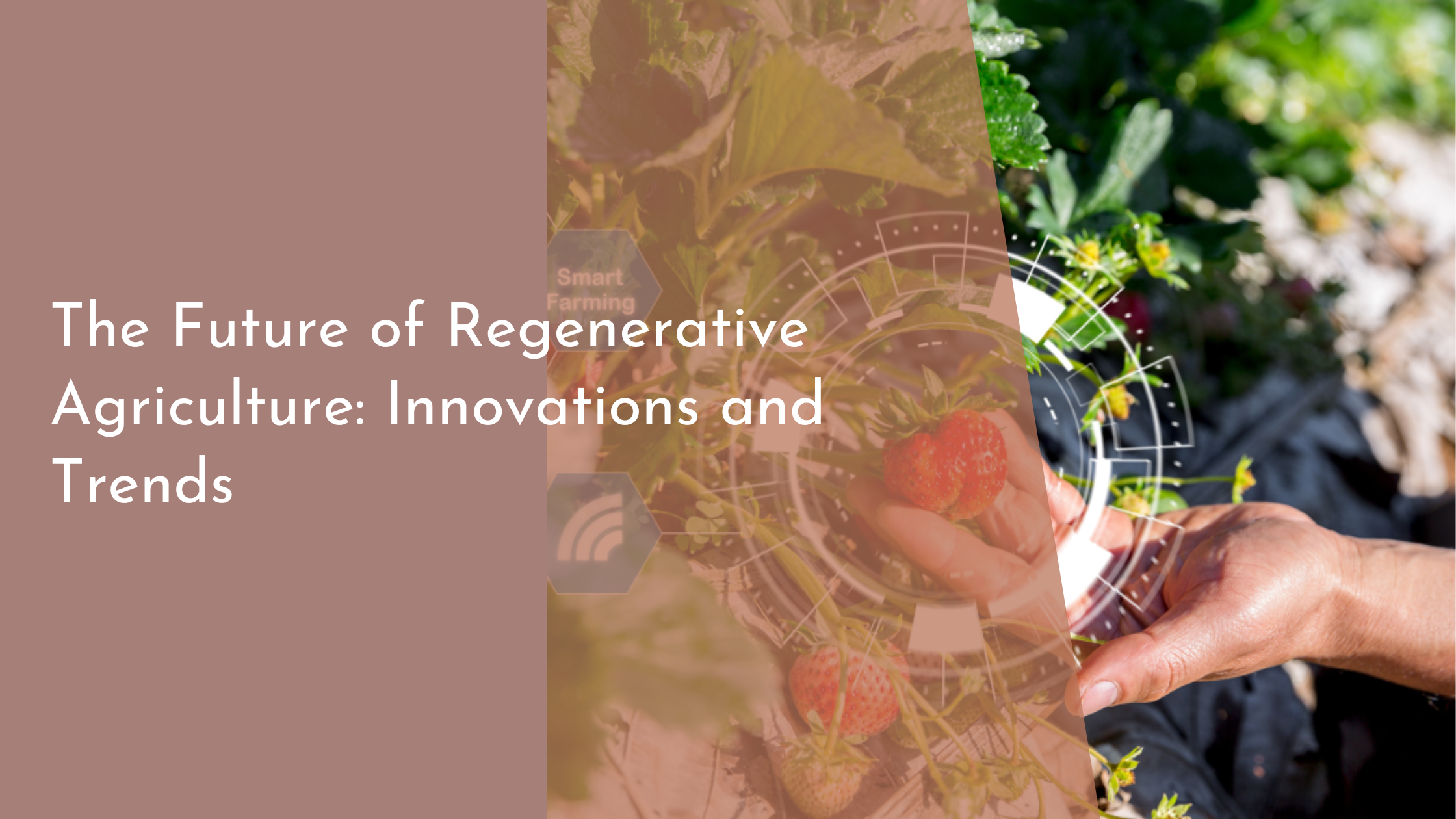The Future of Regenerative Agriculture: Innovations and Trends
Regenerative agriculture is rapidly gaining attention as an effective solution for sustainable farming practices that address both environmental and economic challenges. As the world becomes more aware of the pressing need for sustainable food systems, the future of regenerative agriculture looks promising, driven by technological advancements, breakthroughs in soil health, biodiversity integration, and supportive policies. This article explores the innovations and trends that are shaping the future of regenerative agriculture, providing a comprehensive look at how these practices are evolving to create a more sustainable and resilient agricultural landscape.
Embracing Technology in Sustainable Farming
In the realm of regenerative agriculture, technology plays a pivotal role in enhancing the efficiency and effectiveness of sustainable farming practices. Precision agriculture, which uses GPS technology and data analytics, allows farmers to optimize their use of resources such as water, fertilizers, and pesticides. This targeted approach not only increases crop yields but also reduces environmental impact by minimizing waste and runoff. Furthermore, the adoption of drones and remote sensing technology enables farmers to monitor crop health and soil conditions in real-time, allowing for quick interventions and better decision-making.
Another exciting technological innovation in regenerative agriculture is the use of robotics and automation. Agricultural robots can perform repetitive tasks such as planting, weeding, and harvesting with precision and speed, freeing up farmers to focus on more strategic aspects of farm management. Additionally, advancements in artificial intelligence and machine learning are providing farmers with predictive insights into weather patterns, pest infestations, and crop diseases, allowing them to implement proactive measures. As these technologies continue to evolve, they promise to make regenerative agriculture more accessible and scalable, thereby promoting widespread adoption.
Breakthroughs in Soil Health and Management
Soil health is the foundation of regenerative agriculture, and recent breakthroughs in soil management are paving the way for more productive and sustainable farming systems. One such advancement is the understanding and implementation of cover cropping techniques. Cover crops, such as legumes and grasses, are planted during off-seasons to protect and enrich the soil. They enhance soil organic matter, improve water retention, and prevent erosion, thereby creating a fertile ground for future crops. Additionally, the use of no-till farming practices is gaining traction, as it minimizes soil disturbance, preserves soil structure, and promotes beneficial microbial activity.
Another significant breakthrough in soil health is the focus on soil microbiomes and their crucial role in nutrient cycling and plant health. Researchers are exploring the use of biofertilizers and mycorrhizal fungi to enhance soil fertility and plant growth naturally. These organic solutions not only reduce the reliance on synthetic fertilizers but also promote a more resilient and balanced soil ecosystem. As our understanding of soil ecosystems deepens, regenerative agriculture is poised to unlock the full potential of healthy soils, leading to more sustainable and nutritious food production.
Integrating Biodiversity for Resilient Ecosystems
Biodiversity is a cornerstone of regenerative agriculture, contributing to the resilience and stability of farming ecosystems. Farmers are increasingly recognizing the benefits of polycultures, where multiple crop species are grown together. This practice not only mimics natural ecosystems but also reduces pest pressures, improves soil health, and enhances crop yields. By diversifying their plantings, farmers can create a balanced ecosystem that is less reliant on chemical inputs and more resistant to climate fluctuations.
The integration of livestock into cropping systems is another trend gaining momentum in regenerative agriculture. Through rotational grazing and holistic management, livestock can play a crucial role in nutrient cycling and soil regeneration. Their natural behaviors help aerate the soil, distribute organic matter, and stimulate plant growth. This symbiotic relationship between crops and livestock not only improves farm productivity but also contributes to the overall health and resilience of agricultural ecosystems. As farmers continue to embrace these biodiversity-focused practices, regenerative agriculture will thrive, offering a sustainable path forward for food production.
The Role of Policy in Advancing Regenerative Practices
Public policy plays a vital role in driving the adoption and expansion of regenerative agriculture. Governments worldwide are beginning to recognize the importance of supporting sustainable farming practices through subsidies, grants, and incentives. By providing financial assistance for the adoption of regenerative techniques, policymakers can encourage more farmers to transition to these environmentally friendly practices. Additionally, policies promoting research and education in regenerative agriculture are essential for fostering innovation and disseminating knowledge to farmers and communities.
Collaboration between governments, NGOs, and the private sector is also crucial in creating a supportive environment for regenerative agriculture. Policy frameworks that prioritize sustainable land use, carbon sequestration, and biodiversity conservation can accelerate the shift towards regenerative practices. By setting ambitious targets and implementing accountability measures, policymakers can ensure that regenerative agriculture is not only a viable option for farmers but a mainstream solution for addressing global food security and environmental challenges. As the momentum for regenerative agriculture grows, supportive policies will be instrumental in transforming the agricultural landscape for a brighter and more sustainable future.
The future of regenerative agriculture is bright, with innovations and trends paving the way for a more sustainable and resilient food system. By embracing technology, enhancing soil health, integrating biodiversity, and adopting supportive policies, regenerative agriculture offers a holistic approach to farming that benefits both people and the planet. As these practices continue to evolve and gain traction, they hold the potential to transform agriculture into a force for environmental restoration and climate resilience. The journey towards a regenerative future is underway, and with continued innovation and collaboration, it promises to be a fruitful endeavor for generations to come.

